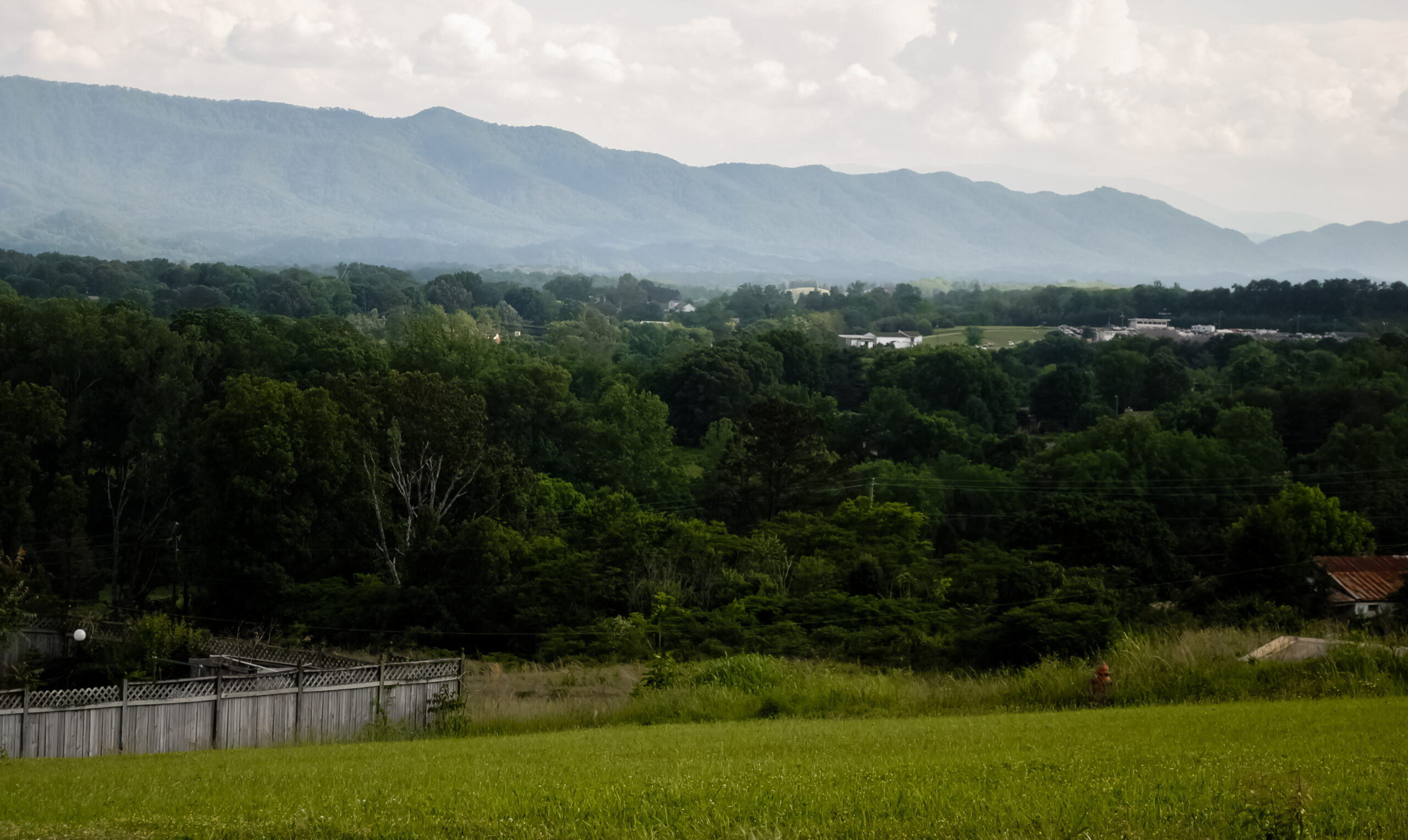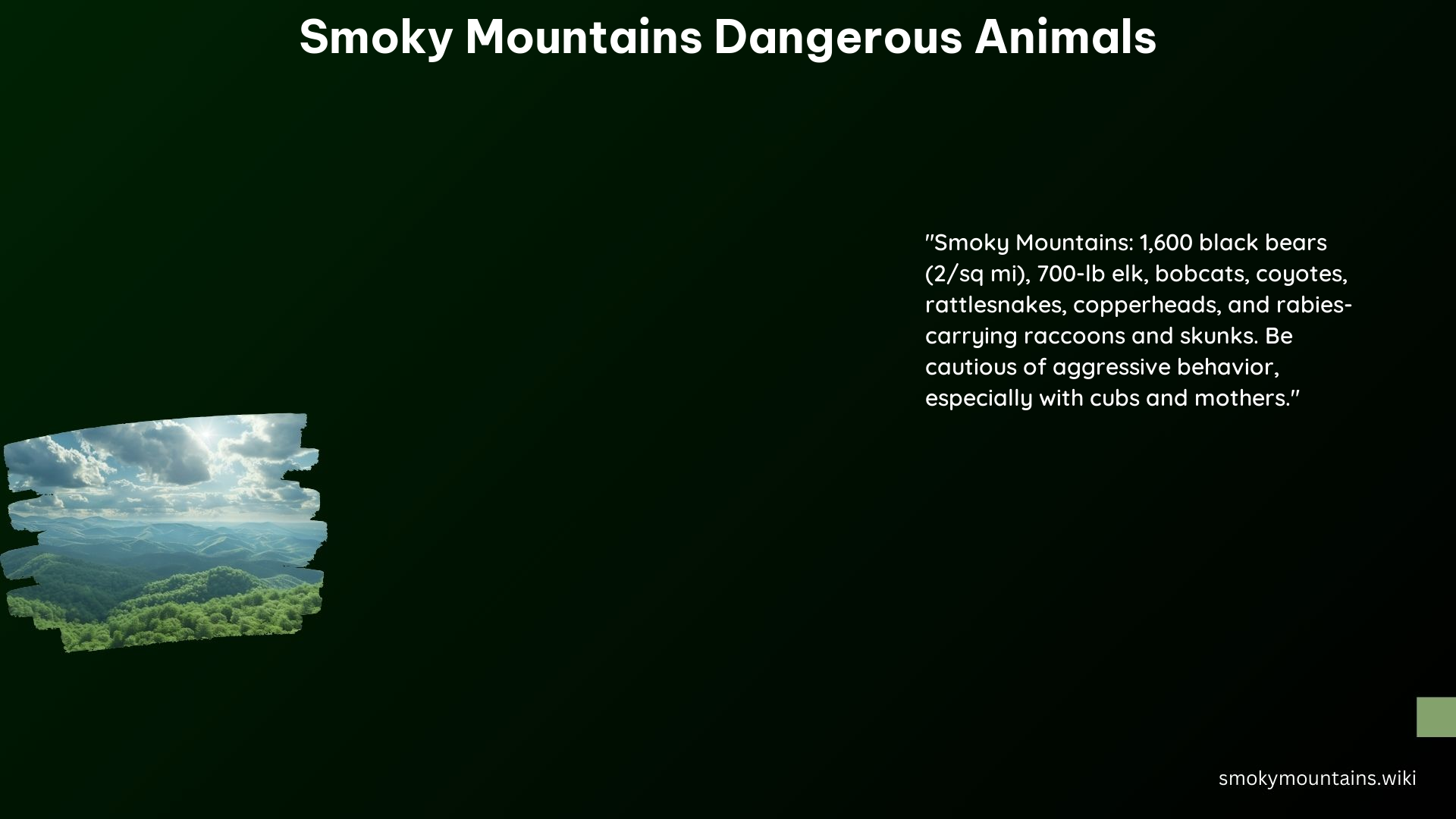The Great Smoky Mountains National Park is a breathtaking natural wonder, but it’s also home to a diverse array of wildlife, some of which can pose a threat to human safety. As a touring enthusiast, it’s crucial to be aware of the dangerous animals that inhabit this region and take the necessary precautions to ensure a safe and enjoyable experience.
Black Bears: The Largest Predator in the Smoky Mountains

Black bears are the largest predators in the Smoky Mountains, weighing up to 300 pounds. These powerful animals can be aggressive if they feel threatened or perceive humans as a threat to their young. It’s essential to maintain a safe distance of at least 50 yards and never approach or feed a black bear.
Bobcats: Territorial and Nocturnal Predators

Bobcats are smaller than bears but can still be a threat to humans. These nocturnal and territorial animals are capable of killing small deer and dogs, and they may become aggressive if they feel their territory is being invaded.
Venomous Snakes: Timber Rattlesnakes and Northern Copperheads
The Smoky Mountains are home to several species of venomous snakes, including the timber rattlesnake and the northern copperhead. These snakes can be deadly if not handled properly, so it’s crucial to be cautious when hiking and to avoid approaching or handling them.
Coyotes: Opportunistic Predators
Coyotes are common in the Smoky Mountains and can be dangerous if they feel threatened or perceive humans as a threat to their young. These opportunistic predators are known to hunt small game and can be aggressive if they feel cornered.
Elk: Powerful and Aggressive During Mating Season
Elk are large and powerful animals that can weigh up to 700 pounds. They can be aggressive, especially during mating season, and should be given a wide berth to avoid potential conflicts.
Skunks: Foul-Smelling Deterrents
While not typically aggressive, skunks can spray a foul-smelling liquid that can cause discomfort and irritation. They are also known to carry rabies, a deadly disease, so it’s best to avoid approaching or disturbing them.
Wild Boars: Non-Native and Aggressive Invaders
Wild boars are not native to the Smoky Mountains but have been introduced to the area. These aggressive animals can be dangerous if they feel threatened or if they perceive humans as a threat to their young. They are known to defend their young violently and can cause significant damage to the ecosystem.
Protecting Yourself from Dangerous Animal Encounters
To minimize the risk of encounters with dangerous animals in the Smoky Mountains, it’s essential to follow these guidelines:
- Maintain a safe distance of at least 50 yards from wildlife, especially bears, elk, and other large animals.
- Store food and trash in sealed containers and airtight bins to avoid attracting bears and other wildlife.
- Be aware of your surroundings and watch for signs of wildlife, such as tracks, scat, or other signs of recent activity.
- Make noise while hiking to avoid surprising animals, especially bears and snakes.
- Stay on designated trails and avoid wandering into dense vegetation or underbrush.
- Carry bear spray as a deterrent in case of a bear encounter.
- Report any unusual animal behavior to park rangers or authorities to ensure the safety of both humans and wildlife.
By following these guidelines and being aware of the potential dangers, you can enjoy a safe and memorable visit to the Smoky Mountains.
References:
– https://www.nps.gov/grsm/learn/nature/mammals.htm
– https://www.pigeonforgetncabins.com/animals-in-the-smokies/
– https://smokiessafepassage.org/learn-more-about-safe-passage/meet-the-animals/
– https://patriotgetaways.com/blog/10-cute-smoky-mountain-animals-that-could-kill-you-if-they-felt-like-it/
– https://www.outdoorguide.com/1539481/creatures-beware-adventuring-smoky-mountains/
